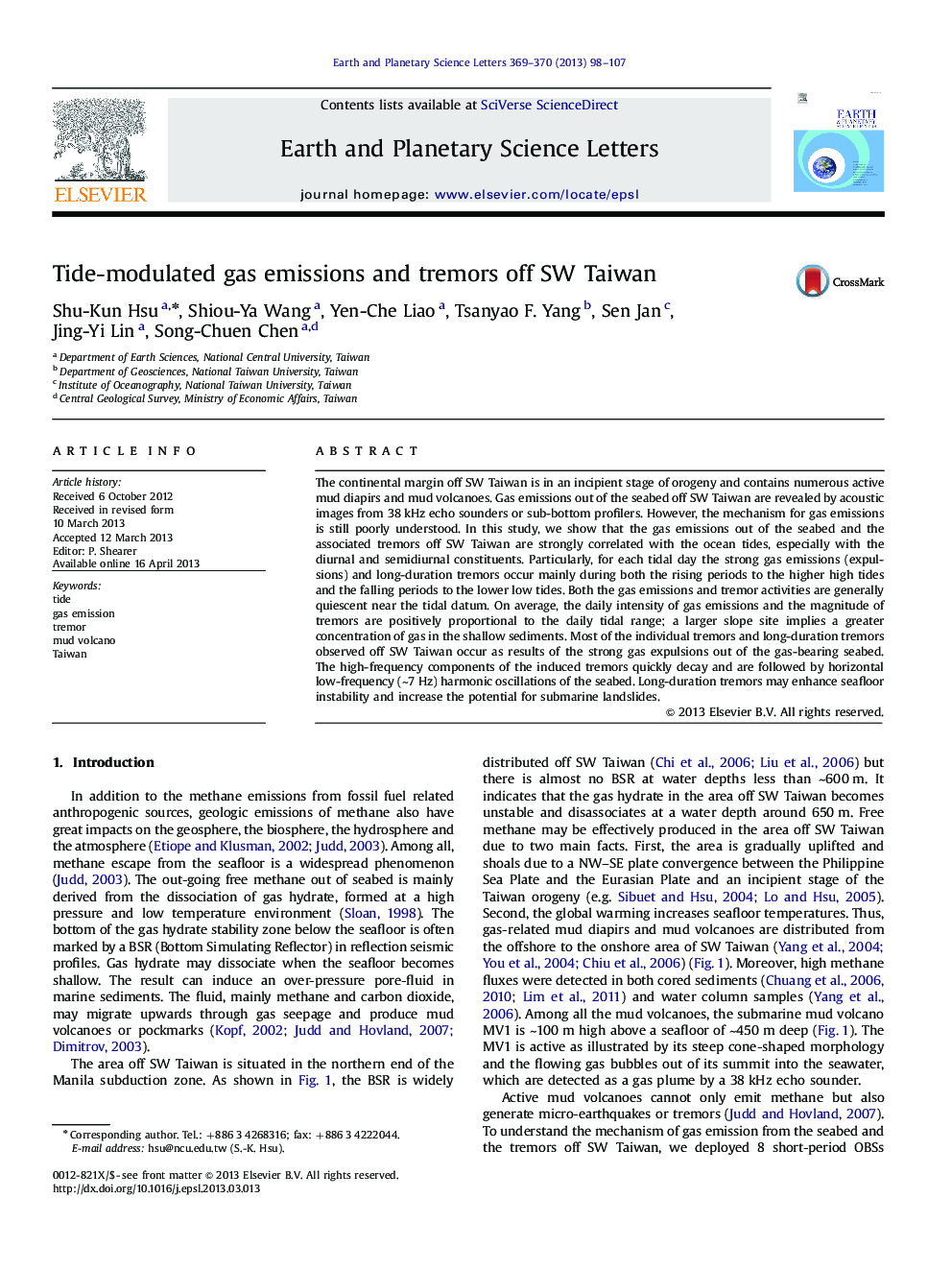| کد مقاله | کد نشریه | سال انتشار | مقاله انگلیسی | نسخه تمام متن |
|---|---|---|---|---|
| 4677096 | 1634784 | 2013 | 10 صفحه PDF | دانلود رایگان |

• Gas emissions out of the seabed are modulated by the ocean tides.
• Gas-induced tremors occur as results of gas expulsions out of seabed.
• Average amplitude of daily tremors is proportional to daily tidal range.
• The seabed off SW Taiwan generally oscillates horizontally around 7 Hz.
The continental margin off SW Taiwan is in an incipient stage of orogeny and contains numerous active mud diapirs and mud volcanoes. Gas emissions out of the seabed off SW Taiwan are revealed by acoustic images from 38 kHz echo sounders or sub-bottom profilers. However, the mechanism for gas emissions is still poorly understood. In this study, we show that the gas emissions out of the seabed and the associated tremors off SW Taiwan are strongly correlated with the ocean tides, especially with the diurnal and semidiurnal constituents. Particularly, for each tidal day the strong gas emissions (expulsions) and long-duration tremors occur mainly during both the rising periods to the higher high tides and the falling periods to the lower low tides. Both the gas emissions and tremor activities are generally quiescent near the tidal datum. On average, the daily intensity of gas emissions and the magnitude of tremors are positively proportional to the daily tidal range; a larger slope site implies a greater concentration of gas in the shallow sediments. Most of the individual tremors and long-duration tremors observed off SW Taiwan occur as results of the strong gas expulsions out of the gas-bearing seabed. The high-frequency components of the induced tremors quickly decay and are followed by horizontal low-frequency (~7 Hz) harmonic oscillations of the seabed. Long-duration tremors may enhance seafloor instability and increase the potential for submarine landslides.
Journal: Earth and Planetary Science Letters - Volumes 369–370, May 2013, Pages 98–107